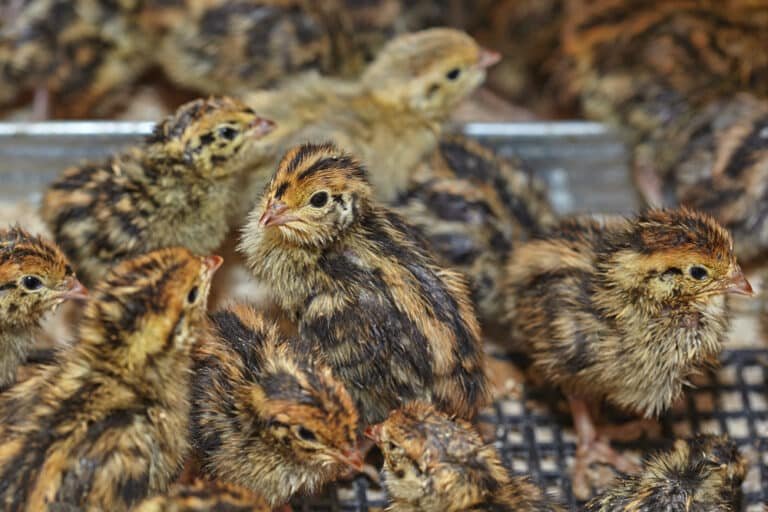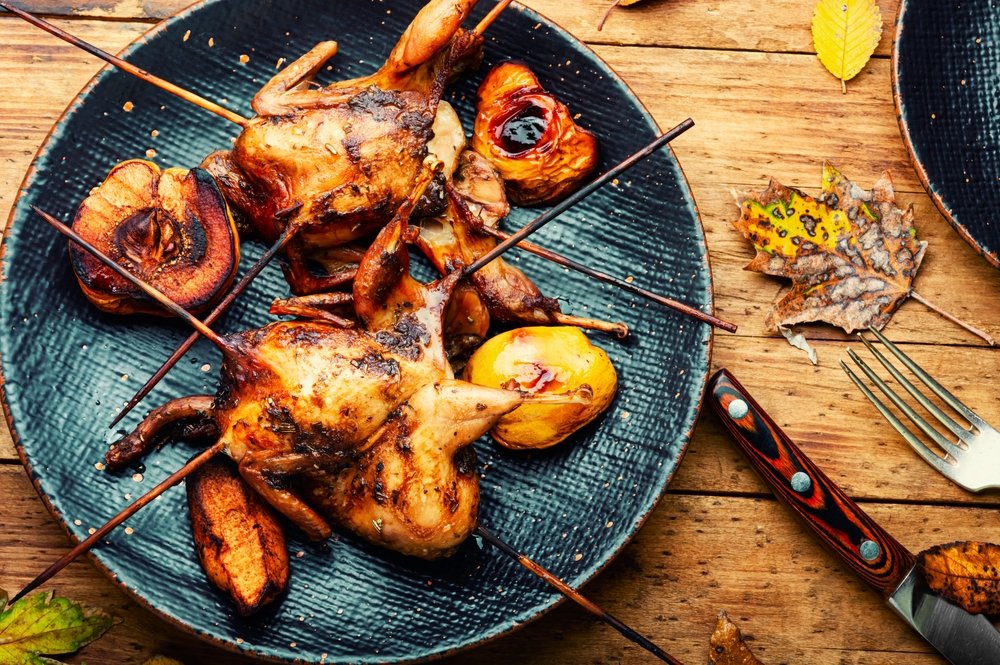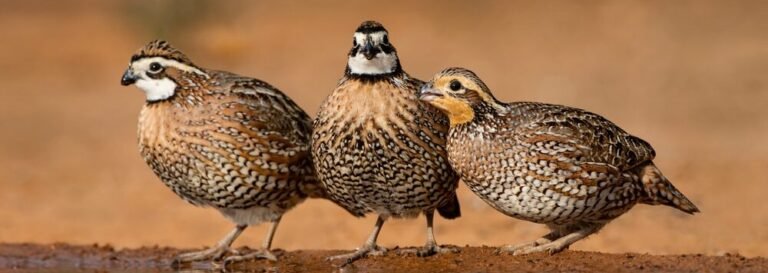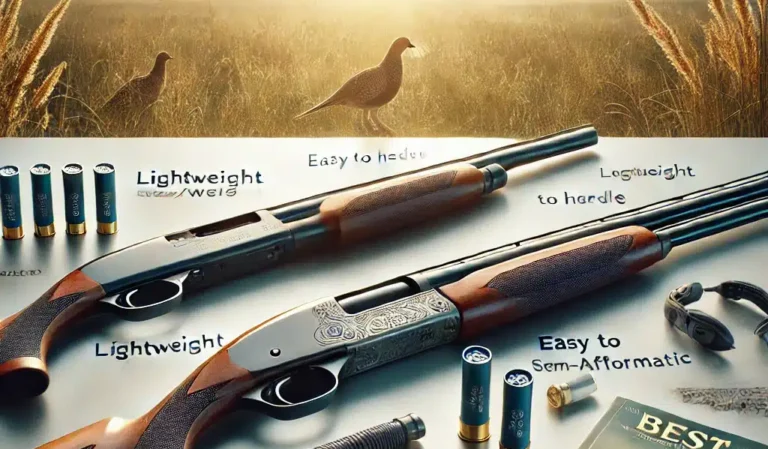Bountiful Bobwhite Quail: A Comprehensive Guide for 2025
The bobwhite quail, scientifically known as Colinus virginianus, is a captivating species of bird that holds a prominent place in the avian world. These charming birds are native to North America and primarily found in the eastern United States.
The bobwhite quail belongs to the family Odontophoridae, which encompasses New World quail. With their distinctive physical characteristics and intriguing behaviors, studying and understanding bobwhite quail provide valuable insights into their ecological significance and conservation efforts.
Brief Overview of the Bobwhite Quail Species
Bobwhite quail are small ground-dwelling birds that exhibit unique features that set them apart from other avian species. Adult males have reddish-brown heads with a prominent white throat patch, giving them an elegant appearance.
Their bodies are primarily grayish-brown with black markings, adding to their impressive aesthetic appeal. Females also possess similar color patterns but with less vibrant hues overall.
Both males and females have short legs and rounded wings adapted for rapid bursts of flight when necessary. Typically measuring around 9-10 inches in length and weighing between 5-6 ounces on average, bobwhites exhibit variations in size and weight among different subspecies throughout their range.
Studying and Understanding Bobwhite Quails
Investigating bobwhite quail is vital for their intrinsic value within the natural world and because they serve as indicators for broader environmental health. As sensitive creatures affected by changing ecosystems and land-use practices, monitoring bobwhites can offer significant insights into ecological imbalances that might affect other wildlife populations or human communities.
Furthermore, understanding these birds’ behavior and life cycle provides researchers with valuable data regarding social structure dynamics within coveys (groups) during breeding seasons.
Insight into courtship rituals, nesting habits, cooperative behaviors for raising chicks, and the significance of their distinctive “bob-WHITE” whistle calls adds to our appreciation of their intricate social lives. By studying bobwhite quail, we can gain a deeper understanding of the natural world and potentially contribute to conservation efforts to preserve these magnificent birds and their ecosystems.
Taxonomy and Classification
Scientific name: Colinus virginianus
The bobwhite quail, scientifically known as Colinus virginianus, belongs to the family Odontophoridae, which includes New World quail. This small ground-dwelling bird is native to North America and is particularly prevalent in the eastern United States. The scientific name “Colinus” refers to its genus, while “virginianus” indicates its association with the state of Virginia, one of the areas where it was first extensively documented.
The classification of bobwhite quail is based on their morphological features and genetic analysis. They are characterized by a plump body with a rounded shape and relatively short wings.
Adult males typically weigh between 5-6 ounces (140-170 grams), while females are slightly smaller, weighing around 4-5 ounces (110-140 grams). These measurements can vary among different subspecies scattered across their range.
Family: Odontophoridae (New World quail)
Bobwhite quail belong to the family Odontophoridae within the order Galliformes. This family encompasses a diverse group of birds called New World quail. They are primarily found in North and Central America, displaying varying adaptations according to their habitats.
Odontophoridae comprises around 34 species, including other well-known members such as California quail and Gambel’s quail. The bobwhite quail stands out due to its widespread distribution across diverse ecosystems within its native range.
Classifying these birds into families and genera is crucial for understanding their evolutionary history and phylogenetic relationships with other avian species. By studying these taxonomical details, scientists can gain insights into bobwhite quail’ unique characteristics and behaviors that set them apart from their avian counterparts.
Physical Characteristics
Size and Weight Variations among Different Subspecies
When delving into the physical characteristics of the bobwhite quail, one cannot overlook the variations in size and weight seen among its different subspecies. These differences are primarily influenced by geographical factors such as climate, habitat, and available food sources. On average, adult bobwhite quail measure about 9-10 inches in length from beak to tail, with males tending to be slightly larger than females.
Plumage Colors and Patterns in Males and Females
The plumage of bobwhite quail showcases an exquisite display of colors and patterns that differ between males and females but retain an overall similarity within each sex category. Males exhibit a striking combination of hues that easily catch the eye amidst their natural surroundings. Their reddish-brown heads provide a bold contrast against their grayish-brown bodies adorned with distinct black markings.
One distinguishing feature of male bobwhite quail is their prominent white throat patch extending down towards their upper chest. This stark white accent is a visual signal during courtship displays or territorial disputes amongst males seeking dominance over a covey (a group of quail). This elegant plumage pattern aids not only in attracting mates but also acts as camouflage, blending with the foliage and undergrowth of their habitat.
Conversely, females share a similar overall pattern to males but with less vibrant colors. Their plumage consists of more subdued shades of brown and gray, allowing them to blend seamlessly into their surroundings when incubating eggs or caring for their chicks.
This natural adaptation helps ensure their survival by minimizing predation risk during vulnerable life stages. Such subtle differences in plumage between sexes contribute to these fascinating birds’ overall beauty and complexity, reflecting evolutionary adaptations and behavioral significance within bobwhite quail populations.
Distribution and Habitat
The bobwhite quail (Colinus virginianus) is primarily found in the eastern United States, making it a native species to North America. Historically, its range extended from the Great Lakes region down to the Gulf Coast and as far west as Texas. Within this range, bobwhite quail occupy diverse habitats such as grasslands, open woodlands, agricultural fields, and shrubby areas with dense vegetation.
Native Range in North America
The native range of the bobwhite quail encompasses various states in the eastern part of the United States. It includes regions such as Virginia, West Virginia, Kentucky, Tennessee, North Carolina, South Carolina, Georgia, Alabama, Mississippi, Louisiana, Arkansas, Missouri, Illinois, Indiana, Ohio and parts of Texas. These areas provide a suitable environment for survival due to various factors, including climate conditions and vegetation types.
Historical Decline due to Habitat Loss
Despite once thriving populations across their native range in North America’s eastern states, bobwhite quail have experienced a significant decline over the past century. The primary cause for this decline is habitat loss resulting from changes in land use practices. As agriculture intensified and urbanization expanded during the 20th century, bobwhite quail habitats were fragmented or converted into farmland or urban areas. This loss of suitable habitat reduced their numbers significantly.
Conservation Efforts to Restore Populations
Awareness about the declining bobwhite quail population has led to various conservation initiatives to restore their populations in specific regions. These efforts focus on implementing habitat management practices that mimic the natural conditions these birds require.
This includes creating patches of early successional habitats with diverse vegetation structures that offer food, nesting cover, and protection from predators. Cooperative programs between government agencies, private landowners, and conservation organizations have been instrumental in restoring bobwhite quail populations.
These programs incentivize landowners to manage their lands in ways conducive to supporting viable bobwhite quail habitats. The restoration efforts include establishing large-scale habitat corridors between fragmented habitats to facilitate bobwhite quail populations’ movement and gene flow.
Additionally, researchers have studied the captive breeding and release of bobwhite quail as a potential strategy to augment population numbers.
Conservationists are also working on identifying key areas for habitat restoration and implementing targeted strategies such as prescribed burning, native grassland establishment, and predator management initiatives.
Understanding bobwhite quail’ distribution and habitat preferences is crucial for their conservation.
Efforts to restore populations involve addressing the historical Decline due to habitat loss and implementing sustainable management practices that promote suitable breeding grounds and quality habitats throughout their native range in the eastern United States.
Behavior and Life Cycle
Social structure within a covey (group of quail)
As a highly social bird, the bobwhite quail forms close-knit groups known as coveys. Although larger groups have been observed, these coveys usually consist of 10 to 15 individuals. Within the covey, a complex social structure emerges.
The dominant male, also called the “covey leader,” is prominent in maintaining order and ensuring the group’s survival. Other males in the group are ranked hierarchically based on their dominance status.
Dominance hierarchy among males during the breeding season
During the breeding season, male bobwhite quail exhibit an intriguing dominance hierarchy within their coveys. This hierarchy is established through aggressive interactions such as pecking and chasing.
The dominant male has exclusive mating rights with females within the group and vigorously defends his territory against rival males. Lower-ranking males may attempt to challenge the dominant male’s position by engaging in courtship displays or vocalizations.
Cooperative behaviors for nesting, brooding, and feeding young chicks
Bobwhite quail display remarkable cooperative behaviors regarding nesting, brooding, and caring for their young chicks. Females work collectively to create nests concealed under vegetation or grasses on the ground. Once eggs are laid (usually 12-20 per clutch), both parents take turns incubating them for around 23 days until hatching occurs.
After hatching, both parents actively attend to their offspring’s needs. This includes protecting them from predators and teaching them essential survival skills such as foraging techniques.
Reproduction and courtship rituals
Bobwhite quail engage in elaborate courtship rituals during the breeding season to attract mates. The most recognizable aspect of their courtship is the distinctive call that gives them their name. The male emits a loud and clear “bob-WHITE” whistle, which resonates through the landscape and declares his presence and readiness to mate.
Nesting habits also play a crucial role in the reproductive success of bobwhite quail. They construct ground nests skillfully hidden beneath dense vegetation or grasses, protecting them from predators and environmental elements.
This behavior ensures the safety and survival of their delicate eggs during incubation. Understanding these intricate courtship rituals and nesting habits helps us gain insight into the fascinating reproductive strategies employed by bobwhite quail, contributing to our knowledge of avian behavior and biology.
Diet and Feeding Habits
A Preferred diet consisting of seeds, grains, insects, berries, leaves
Regarding bobwhite quail’ diet, they exhibit a versatile palate encompassing a diverse range of food items. These charming birds primarily rely on vegetarian fare, with seeds and grains forming a significant portion of their daily intake.
They enjoy consuming various grasses and legumes such as ragweed, smartweed, foxtail millet, sorghum, and clover. The consumption of these nutritious seeds provides bobwhite quail with essential carbohydrates for energy and sustenance.
While the preference for plant-based food is strong among bobwhite quail, they also supplement their diet with protein-rich insects during breeding seasons or when raising chicks. Insects like grasshoppers, crickets, beetles, caterpillars, and spiders serve as valuable protein sources for these avian creatures.
Additionally, when available in their habitat, berries such as blackberries and grapes often find their way into the bobwhite quail’s menu. This varied diet ensures that they have a well-rounded nutritional intake to support their physiological needs throughout different stages of life.
Foraging techniques – scratching the ground with feet to uncover food
Bobwhite quail possess an innate ability to locate hidden food sources on the ground through an interesting foraging technique called “scratching.” This behavior involves using their feet to rapidly scrape away leaf litter or loose soil in search of concealed insects or seeds. They skillfully uncover hidden delicacies beneath the surface with a swift forward motion using both feet simultaneously or alternatingly in a rhythmic manner.
The scratching behavior is useful for finding food and serves other important purposes. By disturbing the ground cover during foraging activities like scratching and pecking at vegetation patches simultaneously known as “tearing,” bobwhite quail create a favorable microenvironment.
This disturbance promotes the germination of seeds and regrowth of new plant shoots, offering an abundant food supply for both themselves and other wildlife. Thus, bobwhite quail’ feeding behavior sustains their nutrition and contributes to the ecological balance within their habitat.
Predators and Threats
Natural predators such as hawks, snakes, fox
Bobwhite quail face various threats from their natural predators in the wild. One of the primary predators of bobwhite quail is the raptor family, which includes hawks and owls. These birds of prey have keen eyesight and powerful talons that make them formidable hunters.
They often swoop down from the sky to catch unsuspecting quail for their next meal. Snakes also significantly threaten bobwhite quail, especially during the nesting season.
Species like rat snakes and kingsnakes are known to raid nests and devour eggs and chicks. The stealthy nature and ability to climb trees make them particularly skilled hunters of vulnerable bobwhite populations.
Foxes are another major predator that prey on bobwhite quail. With their agility, speed, and strong sense of smell, foxes can easily track down these ground-dwelling birds in their habitats.
In addition to natural predators, bobwhite quail face numerous other threats contributed to population declines in recent decades. Habitat loss due to urbanization, agriculture expansion, and changes in land use practices has been one of the most significant factors impacting these birds’ survival.
The conversion of grasslands into residential or industrial areas reduces suitable nesting sites and foraging grounds for bobwhites. Furthermore, intensive farming methods often involve heavy pesticide use that can contaminate food sources or directly harm these small birds.
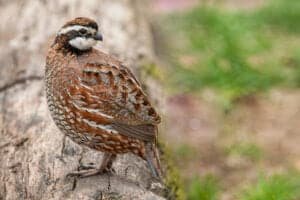
Conclusion
Despite facing various challenges, including predation pressures and habitat loss, efforts are being made across different regions to conserve and restore populations of bobwhite quail. Conservation organizations are working closely with landowners to implement sustainable land management practices that create suitable habitats for these quail species while balancing agricultural needs.
Through initiatives such as habitat restoration projects, controlled hunting practices, and public awareness campaigns, there is hope for the recovery of bobwhite quail populations. Increased appreciation for the ecological importance of these birds and their contributions to biodiversity can help generate support for conservation efforts.
By fostering a harmonious coexistence between human activities and the natural environment, we can ensure the survival and thriving of bobwhite quail for generations to come. Together, we have the power to protect these charming birds and preserve their place in our shared natural heritage.

